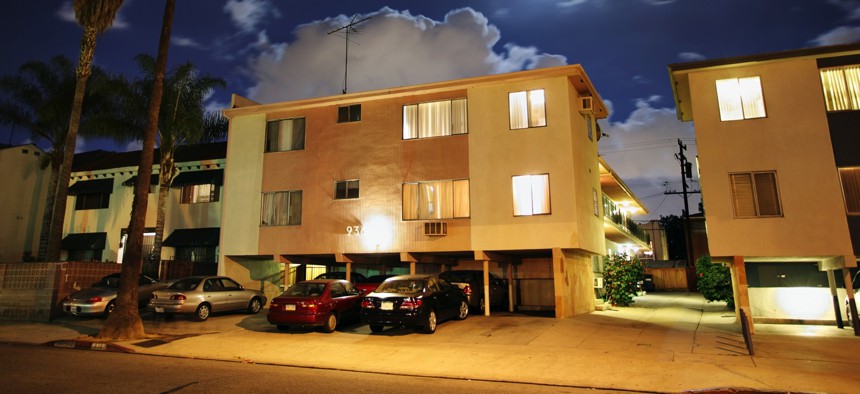Just How Far Behind Is Los Angeles in Meeting Its Demand for Housing?

Konstantin Sutyagin / Shutterstock.com

Connecting state and local government leaders
Development is nowhere near where it needs to be to lower purchase and rental costs, officials say. By 2021, 82,000 new units will be needed.
When it comes to Los Angeles housing, supply does not equal demand, and the ensuing crisis has seen purchase and rental costs skyrocket to be among the nation’s highest.
More than 200 home builders attended a Building Industry Association L.A./Ventura Chapter summit last week to discuss the housing crisis in the L.A. area.
But the only thing that’s clear is housing production must increase to reduce costs.
“In the last 30 years, L.A. County needed to build nearly three times more homes than were actually built in order to prevent housing costs rising faster than the U.S. average,” Brian Uhler, the California Legislative Analyst’s Office’s senior fiscal and policy analyst, said, according to a summit report. “Estimates indicate that the city needs over 100,000 homes just to keep pace with existing demand.”
Los Angeles Mayor Eric Garcetti, the keynote speaker, asked for BIA-LAV members’ help, while L.A. City Councilmember Gil Cedillo urged “outside-the-box” thinking and touted the House L.A. initiative, a public-private partnership he’s working toward to “stimulate the production of new units and promote the preservation of affordability.”
Cedillo introduced six motions on Aug. 23 to streamline construction at an ideal rate of 10,250 units a year—5,823 of those being affordable housing annually—based on the Southern California Association of Governments’ assessment, L.A. needs 82,002 units by 2021.
Between 2006 and 2014, the Housing and Community Investment Department of Los Angeles financed 1,200 affordable housing units a year on average and can only manage 500 a year currently, according to Cedillo’s office.
The councilmember moved to explore development of micro-units, deferring building fees, increasing shared vehicles, and easing restrictions on secondary dwellings on properties.
As for affordable housing, Cedillo asked city staff to identify public land that could hold more units and called for the amendment of L.A.’s site plan review ordinance. His desired change would increase the number of affordable housing units required before a review was necessary from 50—speeding up development.
“The major cause of L.A.’s lack of price-attainable housing is that the annual growth in housing units is now less than half that of the U.S. average,” BIA-LAV CEO Tim Piasky said at the summit. “It’s simple. We need more housing to make it more affordable.”
Dave Nyczepir is a News Editor for Government Executive’s Route Fifty.

NEXT STORY: A Pacific Northwest Megaquake Will Test Government Response in Ways Katrina Never Did





